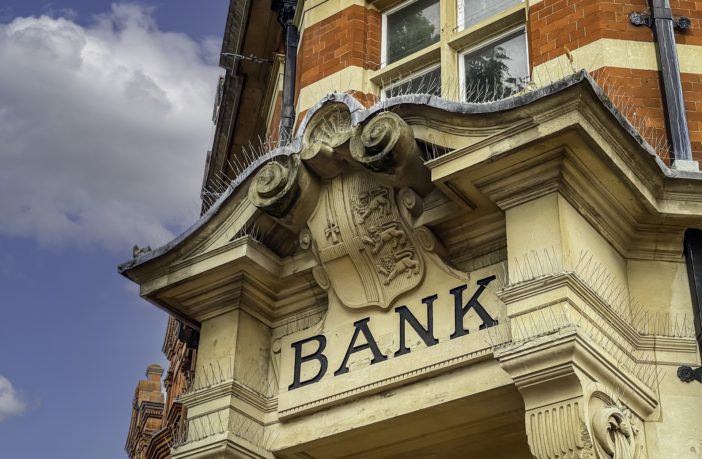From the South Bronx to South-Central LA, our nation’s predominantly Black neighborhoods are viewed as no-go zones for many of the United States’ largest banks. Whether on Randall Avenue or Crenshaw Boulevard, one is more likely to see check casher and payday lender storefronts than an open bank branch.
Putting aside the glaring problem this causes for anyone hoping to open a checking or saving account, the dearth of bank branches in Black neighborhoods means that residents have little recourse but to use non-bank services that come with high transaction costs, while families are unable to establish creditworthiness without bank accounts and black businesses cannot get access to loans and other financial services. In short, Black Americans do not have the same access to capital and lending opportunities their white counterparts do.
To remedy this situation, there needs to be both a greater investment Black-owned financial institutions and more ways for the financial sector to diversify its workforce.
Reliance on alternative financial services like check cashers, cash transactions, prepaid cards, money orders, payday lending, pawn shop loans, and title loans, mean that many Black Americans are being charged exorbitant fees just to receive income, make purchases, and pay their bills. The problem is further compounded when those taking out payday loans are unable to settle them in the next earnings cycle, which means they must roll the principal into a new loan.
With annualized interest rates on these loans as high as 300% to 600% APR, many people are never able to get from under the mounting debt.
The banking problems for Black Americans, however, don’t stop when there is bank availability nearby because many people are put off by minimum balance requirements and overdraft fee policies that are unclear or difficult to navigate. For a person with minimal liquid savings to serve as a buffer, the risk of triggering overdraft fees can prove to be too high.
And even those Black Americans who do rely on traditional banking institutions have faced discriminatory practices. For example, a federal investigation recently found that, from 2004 to 2009, Wells Fargo – one of the nation’s largest banks – harmed Black and Hispanic communities by engaging in discriminatory lending practices against 30,000 Black and Hispanic borrowers.
Additionally, a recent report found that the nation’s third-largest bank by assets rejected more than half of the home refinance applications sent in by Black homeowners while approving almost three-quarters of those sent in by white applicants. And Wells Fargo was also hit last year with a lawsuit in California alleging the bank approved proportionately more white borrowers for a mortgage loan than Black applicants in 2020.
If we are going to remedy this situation, we need not only more banks in Black communities, but more people working for those banks that look like the people in the communities they serve. The nation’s largest financial institutions have for too long used discriminatory practices that keep Black and Brown people out of influential positions at banks.
Last year, federal prosecutors in New York opened a criminal investigation into whether Wells Fargo violated federal laws by conducting fake interviews with female and minority candidates for jobs that had already been filled to pad its diversity statistics. And just earlier this summer, Bank of America settled a case with the Department of Labor that found systematic hiring violations involving African-American applicants.
Along with getting more Black employees at banks, it is also vitally important to expand black-owned banks, community financial development institutions (CDFIs), and minority depository institutions (MDIs) in these neighborhoods. Once upon a time there were more than one hundred black-owned banks in our nation. Now there are a scant 23. Some black-owned banks failed because of poor lending policies. Many failed because of discriminatory enforcement. And if it is a national goal to have robust banking for Black communities, the federal government can help this cause by depositing in, and investing in, Black-owned banks.
As billionaire financier and philanthropist Robert F. Smith said, “Growing our nation’s ‘capillary banking system’ will unlock investment in communities that have been historically left behind.”
As the COVID-19 pandemic left many Black-owned businesses facing structural obstacles and trouble accessing the emergency financing under Paycheck Protection Plan, Smith introduced the idea of the 2 percent Solution. Under Smith’s plan, the nation’s largest banks would allocate 2% of their total net income from the last ten years – approximately $20 Billion – to fund the core Tier 1 capital of community development banks and minority depository institutions.
The funding could also be donated in a tax-advantaged way to a nonprofit entity and the federal government could help speed up effort by providing capital with the Term Asset-Backed Securities Loan Facility the Federal Reserve established to support consumer and business credit during the pandemic.
This type of big picture initiative is necessary if we’re going to fix years of structural racism in this country and let the Black community know that the American Dream is not just for a privileged few.
As Smith said during a speech a few years ago, “I think that will show Americans there is hope, there is an opportunity for the American dream to now be revitalized. And frankly, to give us all confidence that we can actually make this a better country and a better place to live.”
Dr. Julianne Malveaux. Image: courtesy of Dr. Julianne Malveaux.
Dr. Julianne Malveaux is an economist, author and educator. Her book titles include Surviving and Thriving: 365 Facts in Black Economic History. www.julianne malveaux.com.


